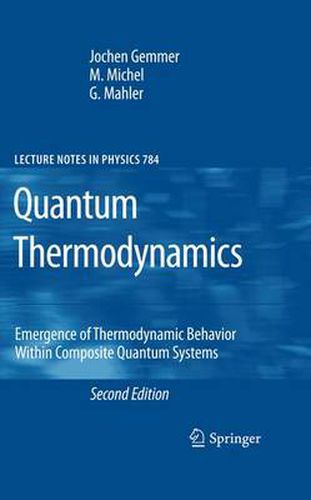Readings Newsletter
Become a Readings Member to make your shopping experience even easier.
Sign in or sign up for free!
You’re not far away from qualifying for FREE standard shipping within Australia
You’ve qualified for FREE standard shipping within Australia
The cart is loading…






This title is printed to order. This book may have been self-published. If so, we cannot guarantee the quality of the content. In the main most books will have gone through the editing process however some may not. We therefore suggest that you be aware of this before ordering this book. If in doubt check either the author or publisher’s details as we are unable to accept any returns unless they are faulty. Please contact us if you have any questions.
Over the years enormous effort was invested in proving ergodicity, but for a number of reasons, con?dence in the fruitfulness of this approach has waned. - Y. Ben-Menahem and I. Pitowsky [1] Abstract The basic motivation behind the present text is threefold: To give a new explanation for the emergence of thermodynamics, to investigate the interplay between quantum mechanics and thermodynamics, and to explore possible ext- sions of the common validity range of thermodynamics. Originally, thermodynamics has been a purely phenomenological science. Early s- entists (Galileo, Santorio, Celsius, Fahrenheit) tried to give de?nitions for quantities which were intuitively obvious to the observer, like pressure or temperature, and studied their interconnections. The idea that these phenomena might be linked to other ?elds of physics, like classical mechanics, e.g., was not common in those days. Such a connection was basically introduced when Joule calculated the heat equ- alent in 1840 showing that heat was a form of energy, just like kinetic or potential energy in the theory of mechanics. At the end of the 19th century, when the atomic theory became popular, researchers began to think of a gas as a huge amount of bouncing balls inside a box.
$9.00 standard shipping within Australia
FREE standard shipping within Australia for orders over $100.00
Express & International shipping calculated at checkout
This title is printed to order. This book may have been self-published. If so, we cannot guarantee the quality of the content. In the main most books will have gone through the editing process however some may not. We therefore suggest that you be aware of this before ordering this book. If in doubt check either the author or publisher’s details as we are unable to accept any returns unless they are faulty. Please contact us if you have any questions.
Over the years enormous effort was invested in proving ergodicity, but for a number of reasons, con?dence in the fruitfulness of this approach has waned. - Y. Ben-Menahem and I. Pitowsky [1] Abstract The basic motivation behind the present text is threefold: To give a new explanation for the emergence of thermodynamics, to investigate the interplay between quantum mechanics and thermodynamics, and to explore possible ext- sions of the common validity range of thermodynamics. Originally, thermodynamics has been a purely phenomenological science. Early s- entists (Galileo, Santorio, Celsius, Fahrenheit) tried to give de?nitions for quantities which were intuitively obvious to the observer, like pressure or temperature, and studied their interconnections. The idea that these phenomena might be linked to other ?elds of physics, like classical mechanics, e.g., was not common in those days. Such a connection was basically introduced when Joule calculated the heat equ- alent in 1840 showing that heat was a form of energy, just like kinetic or potential energy in the theory of mechanics. At the end of the 19th century, when the atomic theory became popular, researchers began to think of a gas as a huge amount of bouncing balls inside a box.